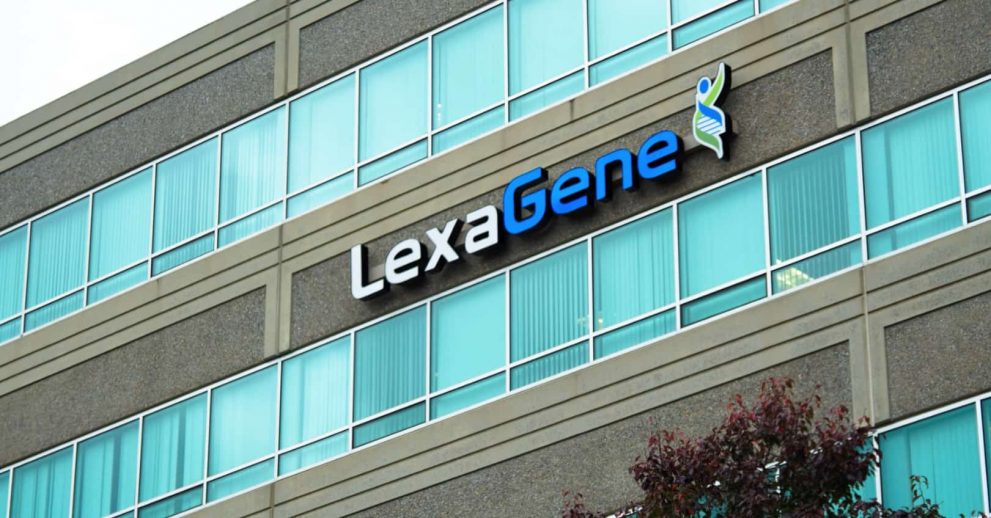
Chelsea Stellick of iA Capital Markets continues to like LexaGene (LexaGene Stock Quote, Chart, News, Analysts, Financials TSXV:LXG), maintaining a “Buy” rating and target price of C$1/share for a projected return of 117.4 per cent in an update to clients on Friday.
Founded in 2007 and headquartered in Beverly, Mass., LexaGene is a med-tech device company developing a fully automated pathogen detection instrument to prevent and diagnose disease in food safety, veterinary and human diagnostics, water quality monitoring, aquaculture pathogen surveillance and others.
Stellick’s latest analysis comes after LexaGene announced it had completed a pair of purchase orders for its multi-purpose MiQLab System to private veterinary hospitals.
“We believe sales are the ultimate catalyst for LXG and are encouraged by these new sales to private veterinary hospitals,” Stellick said. “Better yet, management sounds optimistic regarding the possibility of multi-unit purchase orders in the coming months which have the potential to cement LexaGene’s reputation in its core veterinary market through a bellwether effect from larger customers.”
The new units, on which Stellick estimates an average selling price of $25,000 (all report figures in US dollars except where noted otherwise), are going to the Kuma Veterinary Clinic in Colorado and the Emergency Veterinary Services of Roanoke in Virginia.
The new purchases are an expansion to the company’s veterinary vertical, following the June purchase orders from Alpine Hospital in California, Meridian Veterinary Capital in Texas, Denver Animal Emergency in Denver. All told, the veterinary vertical accounts for seven of the eight MiQLab systems sold to date, with the other purchase order coming from the company’s biopharma vertical.
“Veterinarians are learning more about our system and recognizing how wrong it is to have to wait days to weeks for a reference lab to provide infectious disease results that can impact the well-being of their patients,” said Dr. Jack Regan, Founder and CEO of LexaGene in the company’s December 3 press release. “Our MiQLab System provides a solution to this problem, as it delivers high-quality results at the point of need in just two hours. This time savings empowers them to make evidence-based decisions to improve the quality of the care they provide.”
Stellick estimates ten units will be sold by the end of LexaGene’s fiscal year, with the company already having manufactured 20 units and having the parts to put together an additional 70 units. Meanwhile, Stellick also notes the company’s consumables manufacturing, which includes cartridges and reagent panels, is immediately scalable through a partnership with an FDA-compliant contract manufacturer.
“We believe LXG has the manufacturing capacity to meet as much demand as its sales force can generate without any latency for the foreseeable future,” Stellick said. “Further, we expect that the sales ramp will be gradual enough to avoid supply constraints on an ongoing basis.”
The MiQLab also has potential in human clinical diagnostics, with the company moving away from having an exclusive focus on COVID-19 testing in favour of syndromic testing for multiple pathogens, which Stellick notes would be a better use of the MiQLab’s multiplex capacity while yielding higher reimbursement rates and making it more profitable for customers.
“We endorse the decision to pivot from pursuing COVID-19 testing to full human clinical syndromic panel testing which might be considered a blue-sky program in terms of potential upside,” Stellick said.
Stellick expects the veterinary vertical to be the company’s primary revenue driver in her financial projections, accounting for 94 per cent of the projected $1.4 million in revenue for 2021, with the remainder coming from the open access vertical. The percentage breakdown is projected to essentially hold throughout the decade, with Stellick forecasting 93 per cent of the company’s $242.6 million in revenue for 2030 to come from the veterinary vertical.
Overall, the percentages are similar when comparing the ratio between instrument and consumable revenue, with consumables accounting for 93 per cent of the mix.
2025 projects to be a breakthrough year for LexaGene, with Stellick calling for positive net income for the first time at $4.9 million, ramping up to a projected $92.8 million by 2030 as the company’s operating expenses project to drop to 32 per cent of the company’s revenue by the end of the decade. Stellick projects the company’s EBITDA to turn positive at $1.7 million (4.5 per cent margin) in 2025, the start of a ramp that takes EBITDA to a projected $83.8 million in 2030, representing a potential margin of 34.6 per cent.
Cash flow is also expected to turn positive in 2025 at an unlevered projection of $661,000 (DCF $441,000), eventually growing to an unlevered projection of $59.5 million (DCF $24.7 million) by 2030.
LexaGene’s share price has fallen by 48.3 per cent over the course of the year, having lost two-thirds of its value since reaching a high point of $1.40/share on February 10.
Leave a Reply
You must be logged in to post a comment.






 Share
Share Tweet
Tweet Share
Share




Comment